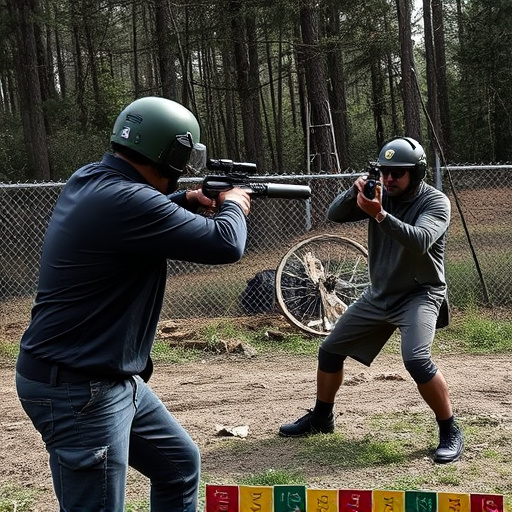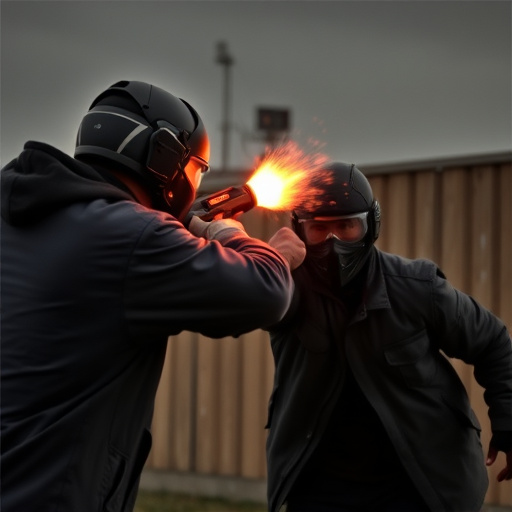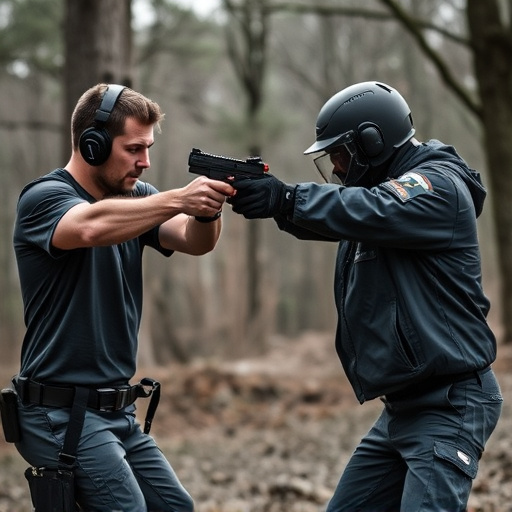Unveiling Electrical Spread Patterns: Tactical Stun Guns & LED Light Analysis
Electrical current, a fundamental physics principle, governs energy flow in materials, including con…….
Electrical current, a fundamental physics principle, governs energy flow in materials, including conductors and living tissues. Tactical stun guns with integrated LED flashlights leverage this understanding for dual functionality: providing illumination and delivering controlled electrical shocks. By analyzing the spread of current, engineers optimize device design, enhancing safety and effectiveness, especially in low-light scenarios. Strategically placed LEDs on these stun guns visually represent current flow, aiding troubleshooting and ensuring optimal performance, making them a game-changer for personal defense and law enforcement.
“Unraveling the secrets of electrical current spread patterns is a game-changer in understanding and enhancing safety technologies, especially in the context of tactical stun guns. This article delves into the fundamental concepts of current flow, focusing on how tactical stun guns incorporate LED flashlights to optimize their effectiveness. By analyzing spread pattern analysis, we explore strategies for enhanced performance and user safety. Discover practical applications of LED light technology in observing current flow, making every deployment precise and controlled.”
- Understanding Electrical Current: The Basics of Spread Patterns
- Tactical Stun Guns: Design and the Role of LED Flashlights
- Analyzing Spread Patterns for Enhanced Effectiveness and Safety
- Practical Applications: Using LED Light to Observe Current Flow
Understanding Electrical Current: The Basics of Spread Patterns

Electrical current, a fundamental force in physics and engineering, is crucial to understanding how energy flows through various materials. When applied to conductors like wires or even living tissues, current spreads in predictable patterns influenced by factors such as resistance, voltage, and the material’s properties. This dynamic behavior is especially pertinent when considering tactical tools like the tactical stun gun with LED flashlight, where precise control over current flow can enhance effectiveness and safety.
By analyzing these spread patterns, engineers and scientists gain insights into both optimal energy transfer and potential risks associated with electrical systems. For instance, understanding how current moves through different components in a stun device ensures its reliability and user safety. Moreover, this knowledge enables the development of more efficient and innovative devices, pushing technological advancements in fields ranging from electronics to biomedicine.
Tactical Stun Guns: Design and the Role of LED Flashlights

Tactical stun guns equipped with LED flashlights have emerged as versatile and powerful tools in personal defense scenarios. The integration of a bright, high-intensity LED flashlight into the design of a stun gun serves multiple tactical purposes. Firstly, it provides illumination during low-light conditions, enabling users to assess their surroundings and identify potential threats effectively. This feature is particularly useful in dark alleys, parking lots, or outdoor environments where visibility is limited.
Moreover, the LED flashlight can act as a distraction technique when deployed strategically. The sudden, intense flash of light can momentarily disorient an attacker, giving the user a crucial moment to escape or apply the stun gun’s electrical current. This dual functionality—illumination and tactical disruption—makes tactical stun guns with LED flashlights a game-changer in personal safety devices, appealing to law enforcement officers, security professionals, and individuals seeking effective self-defense solutions.
Analyzing Spread Patterns for Enhanced Effectiveness and Safety

Analyzing the spread pattern of electrical current is a critical aspect of designing and using devices like the tactical stun gun with LED flashlight. By understanding how energy disperses, manufacturers and users can ensure enhanced effectiveness and safety. This involves studying factors such as current density, resistive properties of materials involved, and the geometric layout of the device’s contacts or probes.
Such analysis allows for strategic adjustments to design features. For instance, optimizing the shape and placement of contacts on a stun gun can improve its impact area and reduce risks associated with off-target shocks. Additionally, integrating an LED flashlight with precise current control enhances both tactical utility and user safety by providing visible light without simultaneously delivering a stun charge to unintended areas.
Practical Applications: Using LED Light to Observe Current Flow

Practical Applications: Using LED Light as a Tool for Observing Current Flow
In the realm of electrical engineering and safety, understanding current spread patterns is vital. One innovative approach to visualizing and analyzing these patterns involves utilizing LED lights, particularly in tactical stun guns with integrated LED flashlights. By strategically placing LEDs on devices or components, engineers can observe and track the movement of electrical current in real-time. This visual feedback provides valuable insights into the distribution of current, helping to identify potential hotspots or areas of uneven flow.
For instance, a tactical stun gun equipped with an LED flashlight allows users to directly monitor the current flow within the device. As current passes through various components, the LEDs illuminate accordingly, offering a tangible representation of the electrical path. This hands-on method enhances the understanding of circuit behavior, facilitates troubleshooting, and ensures optimal performance. Moreover, it contributes to the development of safer, more efficient electrical systems by enabling engineers to make data-driven adjustments.
Electrical current spread pattern analysis is a crucial aspect of understanding the effectiveness and safety of tactical stun guns equipped with LED flashlights. By delving into the basic principles of current flow and its visible manifestations, we can optimize the design and use of these devices for enhanced performance. Practical applications demonstrate that LED lights serve as powerful tools to observe and analyze current patterns, fostering safer and more efficient stun gun technologies. In the world of tactical self-defense, this knowledge is a game-changer, ensuring users can make informed decisions in high-pressure situations.


